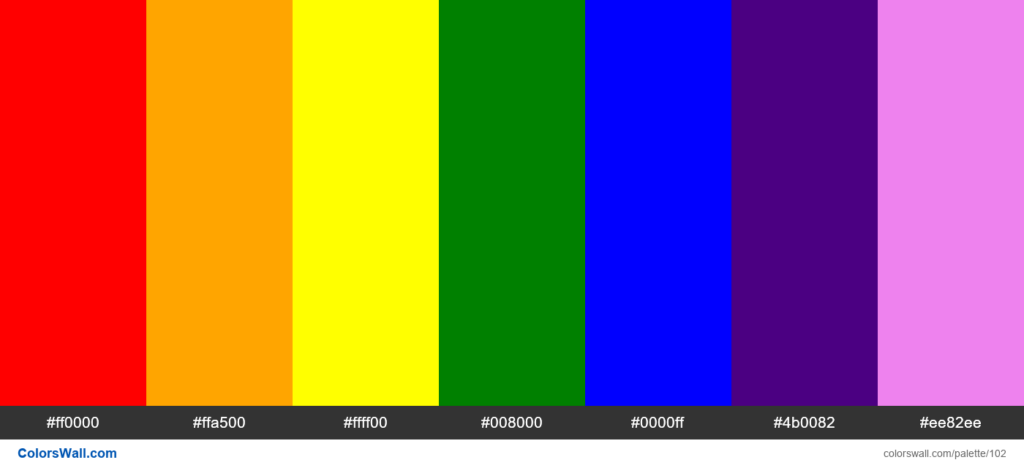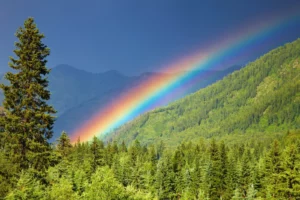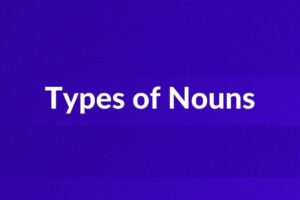What Are the Colors in the Rainbow?

What Are the Colors in the Rainbow?The rainbow is one of nature’s most stunning naturally occurring phenomena. In terms of science, rainbows emerge in the sky when sunlight enters raindrops and causes light dispersion and refraction. However, rainbows represent much more than a scientific aberration.
Also Read:- 5 Reasons Why You Should Visit Leavenworth Washington (WA)
Rainbows have profound meaning and significance for those who find them. People who have suffered a significant personal loss, for instance, are often profoundly affected by the sight of a rainbow, especially on a significant day or when they need to know they haven’t been forgotten. Consequently, because the rainbow is a significant symbol, each of the rainbow’s colors also carries significant meaning and significance.
As a result of the rainbow’s significance in different religions and cultures, it is rich in symbolism.
Let’s examine each of the hues and what they signify.
What Are the Colors of the Rainbow?
The colors of the rainbow are given in the following order:
- Red
- Orange
- Yellow
- Green
- Blue
- Indigo
- Violet
Scientists sometimes refer to this list simply as ROYGBIV (pronounced Roy G. Biv). Each and every rainbow you encounter in the sky will contain these hues in this order.
However, the rainbow actually consists of about one million hues, the majority of which the human eye cannot perceive or comprehend. Therefore, the rainbow is both mysterious and profound.

The Meanings of the Colors of the Rainbow
Here is an explanation of what each of the seven hues of the rainbow represent.
- Red
Because red is the first color in the rainbow’s arc, it is listed first. Additionally, it has the longest wavelength of all the hues displayed. It is a color bursting with vitality and intense emotion.
For Christians, the color red represents vitality and intelligence. For Buddhists and Hindus, the color red corresponds to the grounding Muladhara chakra.
But even without religious significance, red is an emotionally potent color. It is a highly pigmented color, which naturally associates it with intense emotions. Red is never used to represent weakness or finesse. Instead, it is utilized in practically every nation and culture to denote danger or to provide a warning.
Red always catches our attention and alerts us to significant events.
In numerous works of literature, the color red represents fervor, hatred, and conflict. For example, when it comes to roses, the color red signifies the strongest type of love. It is also the hue associated with the devil and evil.
Red is the most revered hue in Japan and China, which is why Chinese brides have historically worn red.
The red of the rainbow represents the following:
- enthusiasm
- passion
- security
- vitality
- Orange
Orange, the second color of the rainbow, is a warm and vivid hue. It is a cheerful color that makes people feel friendly and at ease.
Orange, a mixture of the colors on either side of it (red and yellow), is nourished by both. For instance, the color orange combines the joy of yellow and the vitality of red. According to the chakra system, the energy linked with creativity, sexuality, and conception is represented by orange in this context.
Orange represents creativity and the ability to relax and enjoy life, in addition to the chakra system.
However, it is essential to recognise that not all oranges are made equal.
The color burnt orange symbolizes tension and violence.
Dark orange is symbolic of ambition.
Golden orange signifies self-control.
The color peach orange symbolizes polite manners.
Generally speaking, softer orange hues are most often associated with good moods and emotions.
Orange in the rainbow signifies the following:
- endurance
- perseverance
- strength
- Yellow
Yellow is the most joyful hue in the rainbow.
This hue of the sun indicates vitality and warmth. It is generally related to positive emotions, clear thinking, and effective communication. Yellow is frequently associated with inspiration. If you wish to initiate a new creative activity or endeavor, place something yellow in an area where it may be clearly observed and appreciated.
Egg yolks, sunflowers, lemons, and bees are all natural sources of the color yellow in our world. It is frequently used to depict a cheerful expression.
Yellow, the most brilliant color in the spectrum, is believed to attract our attention more readily than any other hue. (Perhaps this is why yellow is the most used highlighter color!)
In conclusion, it is difficult to ignore something that is yellow.
Yellow should be used sparingly. Yellow in excess can deliver the opposite message. Yellow causes people to feel critical and judgmental.
The yellow of the rainbow represents the following:
- awareness
- cheerfulness
- energy
- orderliness
- Green
Green, situated in the center of the rainbow, is the color of life. In the West, green also represents prosperity, which is why our currency is green.
It is a revitalizing hue that represents growth and rejuvenation.
However, green is also rather contradictory. On the one side, green symbolizes vitality and expansion; on the other, it symbolizes envy. (Have you ever heard the term “green with envy?”) Perhaps the border between prosperity and envy is thinner than we believe.
Because so much of our plant life is green, this color is frequently associated with nature and natural living. The practice of recycling and utilizing natural materials is frequently referred to as “living green.” When individuals decide to replace synthetic items with more natural ones, they are considered to be “going green.”
Intriguingly, the human eye can identify more shades of green than any other color in the rainbow.
The green of the rainbow represents the following:
- growth
- health
- nature
- wealth
- Blue
Blue, the hue of the sky and the water, symbolizes tranquilly, calmness, and stability. This is no surprise. When people want to unwind, they often seek out water. Even replacing the wallpaper on a computer’s background with an image of the ocean can be helpful in this regard.
Due to the fact that blue is the hue of the skies, it is frequently connected with divinity and used to symbolize trust and loyalty.
It is a stabilizing hue, yet it can also be used to convey melancholy (thus the Monday blues). Blues is a well-known genre of music that began in the deep south and is characterized by soft sounds.
Blue is a popular hue with numerous therapeutic and calming effects.
Too much blue might make individuals feel rigid. Blue is an excellent color to use in moderation.
The blue of the rainbow represents the following:
- calm
- communication
- knowledge
- peace
- Indigo
Indigo is the rainbow’s most contested hue.
Since it is difficult to distinguish, scientists and weather enthusiasts have debated for years whether indigo belongs on the list at all. Is indigo genuinely deserving of its own location, or do individuals merely see blue and violet?
Along the same lines, people have long pondered whether indigo is blue or purple. The response is both. To be more precise, indigo is three-quarters blue and one-quarter purple.
Indigo, a combination of purple and blue, is the color of the midnight sky. Indigo stimulates folks to think more profoundly about life and has significant ties to spirituality and introspection as a result.
It also signifies mystery.
Similar to other hues in the rainbow, indigo should not be utilized excessively. Indigo overdose causes feelings of intolerance, judgment, and avoidance. Excessive introspection might lead to frustration or anxiety. However, in moderation, indigo can be quite useful.
The indigo of the rainbow represents the following:
- awareness
- intuition
- spiritual attainment
- wisdom
- Violet
Violet is one of the rainbow’s most beloved hues. And for good cause.
Violet has the shortest wavelength in the rainbow, whereas red has the longest. Violet, located at the opposite end of the rainbow from red, is the most delicate hue. However, do not confuse subtlety with weakness. Violet possesses distinctive superpowers.
For instance, those who are surrounded by the hue violet report feeling more empathic and charitable. Violet is also related with uniqueness and altruism.
Violet, a lighter tint of the color purple derived from red and blue, shares some of the same meaning.
The violet of the rainbow represents the following:
-
- creativity
- imagination
- luxury
- mystery
- royalty
The Bible and the Colors of the Rainbow
We cannot discuss the meaning of the rainbow’s hues without addressing the Bible. The rainbow is supposed to be a sign from God that we have not been forgotten. It is described in the account of Noah’s Ark; after God appeared to Noah after the flood, a lovely rainbow emerged in the sky, symbolizing His Glory, Power, and Covenant.
The rainbow is mentioned in the Bible’s Books of Genesis, Revelation, and Ezekiel.
- It is depicted in Genesis as a demonstration of God’s mercy as well as the covenant He made with Noah that a deluge of this magnitude would never occur again.
- Apostle John compares the colors of the rainbow to the glory or strength of God in Revelation.
- The hues of the rainbow are compared to the glory of God in Ezekiel 1:26–28.
Angel Colors
Angel colors is another essential word relating to the rainbow’s hues. These are used by devout Christians to concentrate on their prayers to the Lord. Similar to the seven colors of the rainbow, there are seven angel colors. Some gifted individuals with sight perceive an additional metaphysical system, which they believe to be angels sent to Earth to guide humanity. These are actually comparable to the previously discussed chakra and aura color concepts.
The seven angelic hues consist of:
- Blue: Angel Michael (Power/Protection)
- Yellow: Angel Jophiel (Thoughts/Wisdom)
- Pink: Angel Chamuel (Love/Relationships)
- White: Angel Gabriel (Purity/Harmony)
- Green: Angel Raphael (Healing/Prosperity)
- Red: Angel Uriel (Wise Service/Energy)
- Purple: Angel Zadkiel (Mercy/Transformation)Angel Zadkiel (Mercy/Transformation) appears in violet.
Conclusion
The rainbow is a very beautiful, intriguing, and enchanting occurrence. Nothing in nature delights or energizes us more than spotting a full or double bow in the sky. And understanding the importance of each color adds to the fascination.
Next time you see a rainbow, pause to appreciate it. Let its beauty and creativity bring you joy and calm.
It has been said that no two persons perceive a rainbow identically. Therefore, the rainbow you see in the sky is truly unique.








